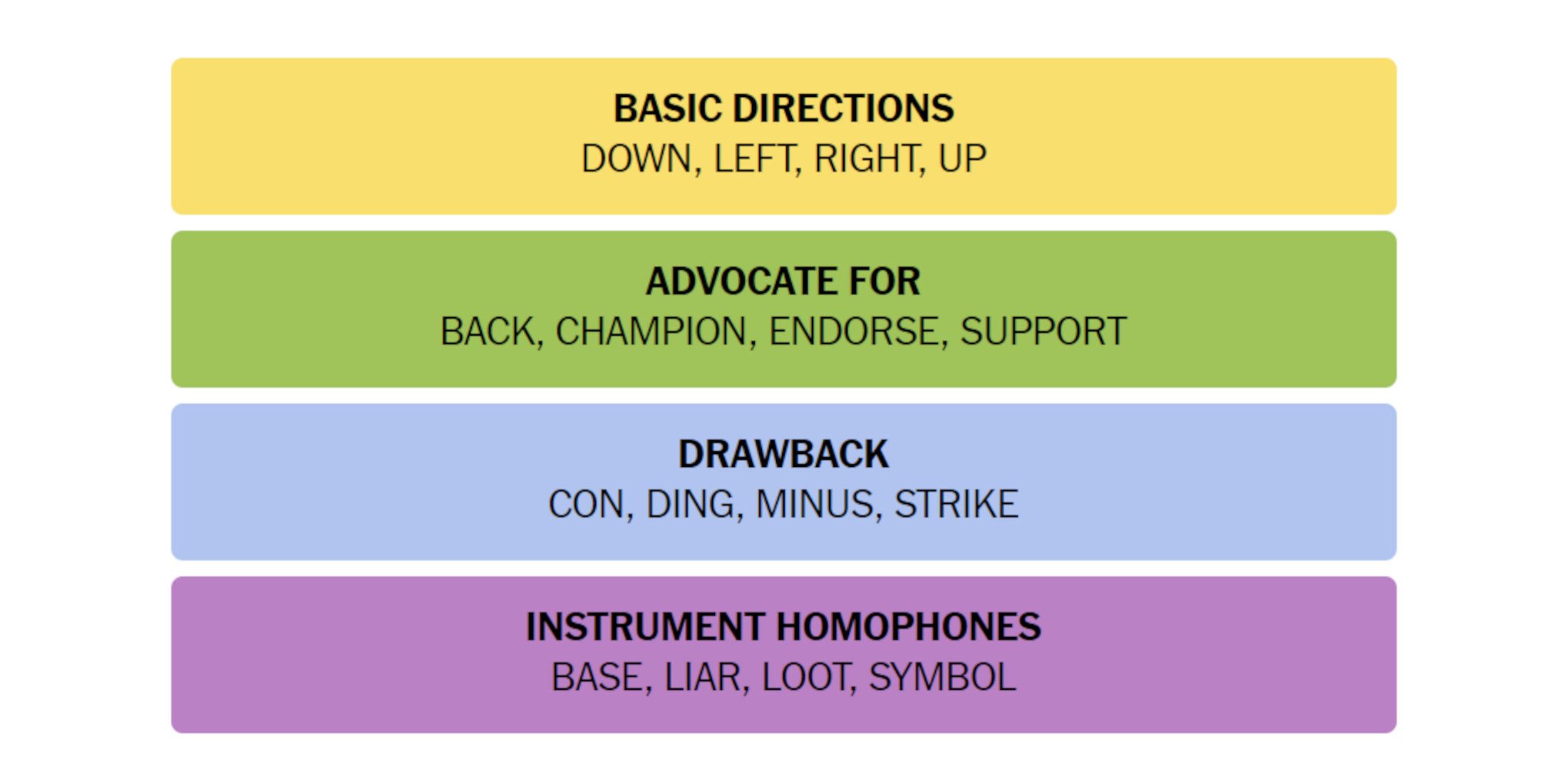Accessibility Concerns Amidst Game Industry Contraction

Table of Contents
Budgetary Constraints and Accessibility Features
Reduced budgets directly impact the resources allocated to accessibility features. This means fewer resources are available for crucial aspects of inclusive game design. The consequences can be significant, potentially impacting the experience of millions of players.
- Fewer developers dedicated to accessibility testing and implementation: With tighter budgets, studios may reduce or eliminate dedicated accessibility testing teams, leading to less thorough testing and fewer accessibility features implemented. This can result in games launching with significant accessibility issues.
- Limited financial resources for specialized accessibility tools and consultations: Specialized software and expert consultations are expensive. Budget cuts often mean these crucial resources are the first to be sacrificed, hindering the development of truly accessible games.
- Prioritization of core gameplay features over accessibility enhancements: When faced with budget constraints, developers are more likely to prioritize the core gameplay loop, potentially sacrificing less prominent—but still vital—accessibility features.
Neglecting accessibility has significant long-term financial implications. The potential market share lost by excluding players with disabilities is substantial. A truly inclusive approach to game accessibility is not just ethically sound; it's also smart business.
The Impact on Diverse Player Bases
Reduced accessibility significantly affects players with disabilities, creating a barrier to participation and enjoyment. This exclusion is not just a matter of convenience; it’s a matter of fundamental fairness and inclusivity.
- Exclusion of players with visual, auditory, motor, and cognitive impairments: Without adequate accessibility features, gamers with various disabilities are effectively barred from enjoying many games. This includes those with visual impairments (lack of sufficient screen reader compatibility or colorblind modes), auditory impairments (lack of subtitles or audio cues), motor impairments (lack of customizable controls), and cognitive impairments (lack of clear and concise instructions).
- Decreased enjoyment and engagement for players with disabilities: Even with some accessibility features, the experience might still be frustrating or less enjoyable if these features aren't well-implemented or don't meet the needs of a diverse range of players.
- Negative impact on inclusivity and representation within the gaming community: The lack of accessibility reinforces the marginalization of players with disabilities and sends a harmful message that their participation is not valued.
Diverse game accessibility is essential for fostering a broader, more welcoming gaming community. It’s about ensuring everyone can participate and enjoy the same experiences.
Specific Accessibility Features Affected
Certain accessibility features are particularly vulnerable to budget cuts. These crucial elements often require significant development time and resources.
- Subtitles and closed captions: Accurate and comprehensive subtitles are essential for deaf and hard-of-hearing players. Cutting these can drastically reduce the game's accessibility.
- Customizable controls and input methods: Allowing players to customize controls is crucial for individuals with motor impairments. This may involve offering alternative input methods, such as voice commands or switch controllers.
- Colorblind modes: These modes adjust color palettes to improve visibility for colorblind players, preventing confusion and frustration.
- Text-to-speech and speech-to-text functionalities: These features aid players with visual or motor impairments, enabling them to interact with the game more easily.
- Assistive technology compatibility: Ensuring compatibility with external assistive technologies, such as screen readers and eye-tracking software, is crucial for many players.
The Role of Developers and Publishers
Developers and publishers have an ethical responsibility to prioritize game accessibility. This is not simply a matter of compliance; it's about creating a more inclusive and equitable gaming experience.
- Implementing robust accessibility testing procedures: Thorough testing with diverse testers, including those with disabilities, is crucial for identifying and resolving accessibility issues.
- Investing in accessible game design principles from the outset: Incorporating accessibility considerations from the initial design stages, rather than as an afterthought, is far more effective and cost-efficient.
- Collaborating with accessibility experts and disability advocacy groups: Seeking external expertise helps developers make informed decisions and ensure the effectiveness of accessibility features.
- Providing transparency regarding accessibility features in game marketing materials: Clearly stating the game's accessibility features in marketing materials is crucial for informing potential players and managing expectations.
Several studios successfully prioritize accessibility despite budget limitations, demonstrating that it is achievable with careful planning and creative solutions.
The Potential for Creative Solutions
There are creative and cost-effective ways to improve game accessibility without breaking the bank. These solutions require innovation and a commitment to inclusion.
- Utilizing free or open-source accessibility tools: Many free and open-source tools can assist in developing and testing accessibility features.
- Leveraging community feedback and user-generated content for accessibility improvements: Engaging with the gaming community, especially players with disabilities, can provide valuable insights and help identify areas for improvement.
- Collaborating with other studios to share resources and best practices: Sharing resources and knowledge helps reduce development costs and improve the overall quality of accessibility features.
- Focusing on easily implemented accessibility features that offer significant impact: Prioritizing features with a high impact-to-effort ratio ensures maximum accessibility improvement with minimal resources.
Conclusion
The contraction within the game industry presents a serious challenge to the progress of game accessibility. Budget cuts threaten to diminish the inclusion of players with disabilities, undermining the potential of a broader and more diverse gaming community. While financial limitations are real, the ethical imperative to provide accessible gaming experiences remains paramount.
We urge developers, publishers, and players to prioritize game accessibility during this challenging time. Let's work together to ensure that everyone can enjoy the magic of gaming, regardless of their abilities. By advocating for inclusive design and supporting studios that champion accessibility, we can create a more equitable and enjoyable future for all gamers. Let's continue to raise awareness and demand better game accessibility for everyone. Improving game accessibility is not just beneficial for individual players; it’s essential for the long-term health and growth of the entire gaming industry.

Featured Posts
-
 Come I Dazi Usa Influenzano I Prezzi Del Vestiario
May 24, 2025
Come I Dazi Usa Influenzano I Prezzi Del Vestiario
May 24, 2025 -
 Kazakhstan Stuns Australia In Billie Jean King Cup Qualifier
May 24, 2025
Kazakhstan Stuns Australia In Billie Jean King Cup Qualifier
May 24, 2025 -
 Bangladeshs European Expansion Focusing On Collaborative Growth
May 24, 2025
Bangladeshs European Expansion Focusing On Collaborative Growth
May 24, 2025 -
 New York Times Connections Hints And Answers For Puzzle 646 March 18 2025
May 24, 2025
New York Times Connections Hints And Answers For Puzzle 646 March 18 2025
May 24, 2025 -
 Escape To The Country A Practical Guide For Relocating To Rural Life
May 24, 2025
Escape To The Country A Practical Guide For Relocating To Rural Life
May 24, 2025
Latest Posts
-
 Billie Jean King Cup Kazakhstan Defeats Australia In Qualifying Match
May 24, 2025
Billie Jean King Cup Kazakhstan Defeats Australia In Qualifying Match
May 24, 2025 -
 Kazakhstan Triumphs Over Australia In Billie Jean King Cup Qualifier
May 24, 2025
Kazakhstan Triumphs Over Australia In Billie Jean King Cup Qualifier
May 24, 2025 -
 Kazakhstans Billie Jean King Cup Victory Over Australia
May 24, 2025
Kazakhstans Billie Jean King Cup Victory Over Australia
May 24, 2025 -
 Italian Open Gaubas Scores Victory Over Shapovalov
May 24, 2025
Italian Open Gaubas Scores Victory Over Shapovalov
May 24, 2025 -
 Kazakhstan Stuns Australia In Billie Jean King Cup Qualifier
May 24, 2025
Kazakhstan Stuns Australia In Billie Jean King Cup Qualifier
May 24, 2025
